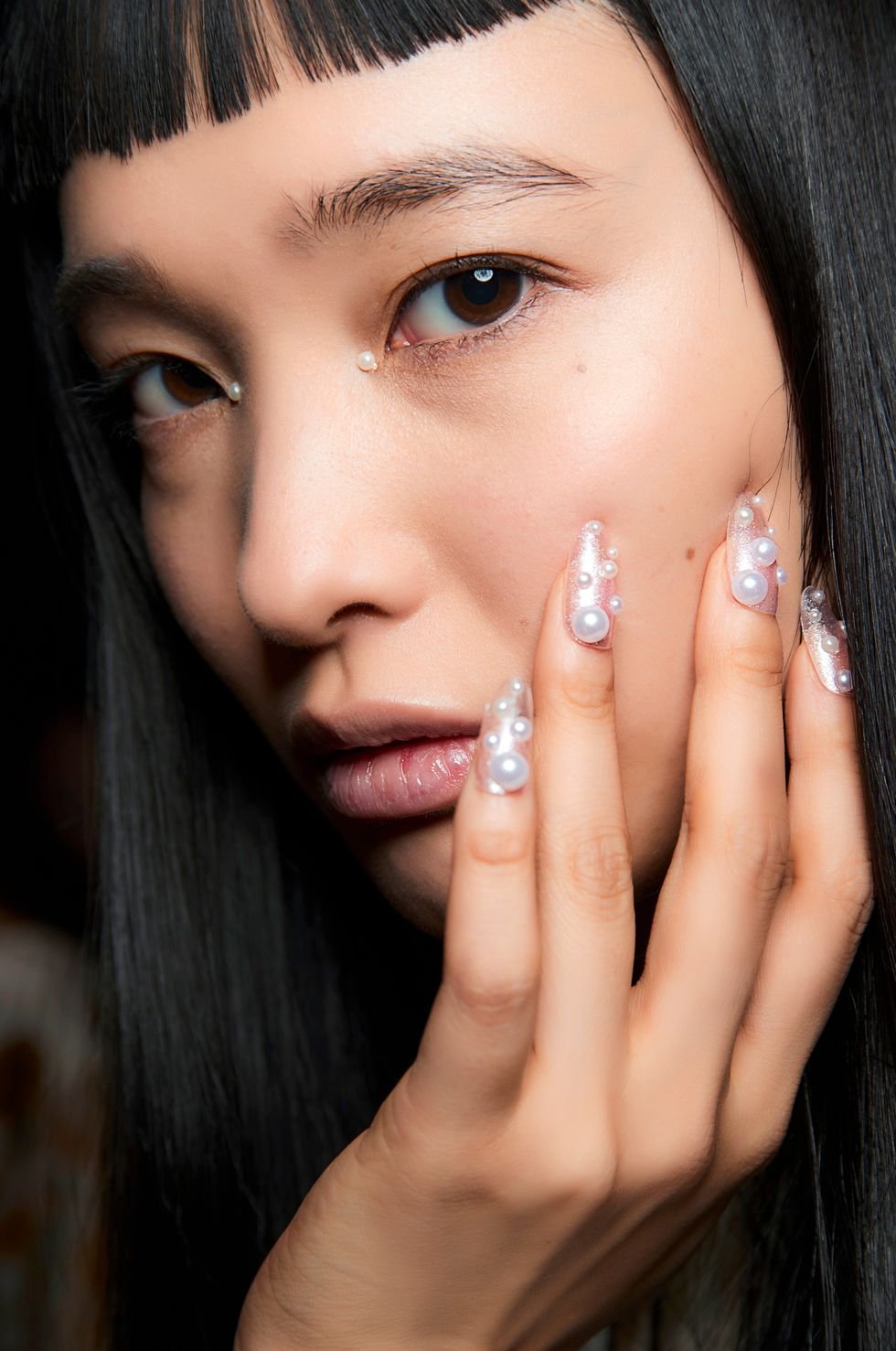Very few things are more satisfying and relaxing for me than a nail salon trip for a fresh set of acrylic nails. It’s the little things that I look forward to that make it so sweet: Picking a nail polish color, the buzzing sound of the electric nail drill smoothing out any roughness on my nail, and, of course, walking away with freshly coated nails to tap, tap, tap on every surface I pass. Then comes the not-so-satisfying parts like the nail breaking, the sometimes painful removal process, and the thin, brittle nails I’m left to nurse back to health for weeks on end. Press-ons are a significantly less expensive option, but they don't last as long as a professionally-applied set. So what to do when you want the look of long acrylic nails without the risk or damage? Enter: gel nail extensions.
What are gel extensions?
What separates gel and acrylics nails is the material that each is made of. An acrylic tip is made of plastic and requires a monomer liquid and polymer powder to create the sculpted nail. In contrast, gel nail extensions are “pre-shaped nail tips that are made completely out of the gel and cover the entire nail,” Trenna Seney, NYC freelance nail manicurist, tells ELLE.com. Think press-on—sans nail glue—but more durable and versatile. Gel nails are a healthier alternative to acrylic nails; they are quicker to apply and even quicker to remove—damage-free. Although you may be tempted to channel your inner nail artist, Seney recommends resisting the urge to do gel extensions yourself, and instead, go see a professional. Until then, here’s a guide of everything you need to know about gel extensions.
Are gel extensions better than regular acrylic?
What makes gel extensions superior in this situation is that it’s not only made of gel for long-wear and durability, but it doesn’t require any harsh chemicals. “There are plenty of benefits, including no damage to your natural nails, the tips are lightweight, there are no fumes, strong odors, and heavy filing," Seney adds. "When my clients remove their gel extensions, their natural nails are longer and stronger.” With acrylic tips, on the other hand, the removal process involves drilling, soaking, and filing. Removing gel extensions simply requires soaking your nails in acetone, which helps the gel tips dissolve. You don’t have to worry about gel extensions preventing you from doing your everyday tasks, either. “The gel tips are pretty strong, so you can do normal daily things without being worried your nail will pop off or lift. I tell my clients try not to touch too much-rubbing alcohol or acetone,” Seney adds, as alcohol and acetone can weaken the gel tip.
How long do gel nail extensions last?
When done professionally, Seney says gel extensions can last up to three to four weeks. Seney adds that if quality products are used you can extend the wear-time for up to five weeks. Seney uses the popular Apres Gel-X system and Medusa Gel Polish for her nail art designs.
How much do gel extensions typically cost?
Gel extensions should run you only a few extra dollars more than the normal acrylic tips. The price is comparable because of how strong and long-lasting gel extensions are. Seney explains that “rates depend on the nail tech’s level of expertise and what the client wants on the nails. Swarovski crystals, hand-painted designs, charms, etc. all come with a hefty price tag. Gel extensions range from $85-$350, the more intricate [the design], the pricier it gets.”
How are gel extensions applied?
Step 1: Prep the nails. The nail tech will file the client’s nails, push cuticles back, trim dead cuticles, and buff nails. The nails must be clean (and dry) before application.
Step 2: Find the right size. Take each finger and find the correct size tip that fits. All the nails in a kit of tips have numbers to compare for each hand.
Step 3: Depending on your nail tech’s skill level, file the inside of the nail tips or apply a layer of acetone. This will create a bit of grip for the adhesive.
Step 4: Apply bonder liquid to natural nails. Bonder is a dehydrator and you want to make sure your natural nails are as dry as possible with no oils or debris.
Step 5: Apply primer liquid to natural nails. Primer makes your nails sticky so that it’s easier for the gel to attach. (Both the bonder and primer are included in the Apres Gel X kit)
Step 6: Apply a thin layer of extend gel to the natural nails. (Clear gel liquid also included in the kit)
Step 7: Put your hand in the UV/LED lamp for 60 seconds.
Step 8: Apply some gel to the underside of the tips. Make sure the client’s hand is straight. Apply the gel tip to the natural nail, and press down. As one hand is holding the tip on the client's hand, take your other hand holding a handheld LED light shine it directly on the nail for 30 seconds. Have the client place her hand inside the UV/LED lamp for 60 seconds.
Step 9: Repeat on all fingers
Step 10: All done!

